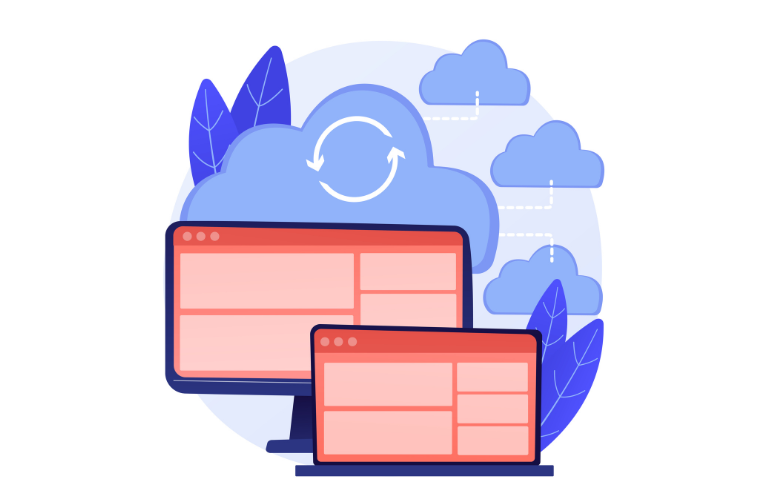Laravel Herd Security is a hot topic for developers using this powerful PHP development environment. While tools like Laravel Herd streamline debugging with features like dump() interception, they can unintentionally open doors to production data leaks if not handled carefully. Imagine leaving sensitive user info exposed because a stray dump() slipped into your live app—yikes!
This article dives into how intercepting dump() in Laravel Herd can expose production data, why it’s a big deal, and how to lock it down with practical steps. Whether you’re a solo dev or part of a team, these tips will keep your app safe and speedy.
Table of Contents
Why Laravel Herd Security Matters
Laravel Herd is a game-changer for PHP developers, offering a one-click setup for Laravel projects. Its Dump Watcher feature, which intercepts dump() calls and displays them in a separate window, is a lifesaver for debugging complex code. But here’s the catch:
if you’re not vigilant, that same feature can become a security nightmare in production. Stephen Rees-Carter warned in his August 2024 post that forgetting to remove dump() calls can leak sensitive data like passwords or API keys to anyone who stumbles across it.
The beauty of Laravel Herd Security lies in its balance of convenience and power. However, the downside is that dump() output isn’t immediately visible on the page, making it easy to miss during a frantic coding session. Commit that code to production, and you’ve got a ticking time bomb.
The Risk of dump() in Production
Picture this: you’re debugging an API endpoint with Laravel Herd, and you toss in a quick dump($user) to check some data. It works like a charm in development, showing up neatly in Herd’s Dump Window. But then, you push that code to production without stripping it out. Suddenly, anyone hitting that endpoint might see a full dump of user details—names, emails, even hashed passwords—depending on what you left in there.
This isn’t just a hypothetical. Rees-Carter notes that dump() and dd() sneaking into production is “fairly common,” and the results can be disastrous. With Laravel Herd Security in mind, the separate Dump Window makes it even trickier to spot these slip-ups, especially when you’re juggling multiple screens or deep in a problem.
How Laravel Herd’s Dump Interception Works
Laravel Herd Security shines with its ability to intercept dump() calls. Instead of cluttering your browser or terminal, it routes them to a dedicated window. Here’s a quick rundown of how it operates:
- Enable Interception: Click the antenna icon in the Dump Window to start capturing dump() output.
- Use dump() as Usual: Add dump($variable) anywhere in your code, and it pops up in the window.
- Clear and Search: New dumps stack at the top, and you can search or clear them with a button.
Paul Redmond highlighted the Solo Dumps package in March 2025, which works similarly by running a console command (solo:dumps) to catch dumps in a terminal. Both tools aim to keep your app’s layout intact while debugging, but they share the same pitfall: they mask dump() visibility, increasing the odds of it hitting production unnoticed.
Real-World Use Case: A Debugging Disaster
Let’s walk through a scenario. You’re building an e-commerce app with Laravel Herd. To troubleshoot a payment issue, you add this in your controller:
public function processPayment(Request $request)
{
$paymentData = $request->all();
dump($paymentData); // Debugging line
// Payment logic here
}In development, Laravel Herd Security catches this in the Dump Window, showing you credit card details and user IDs. You fix the bug, commit the code, and deploy. On production, that dump() still runs, potentially logging sensitive data to a file or exposing it in an API response. A hacker sniffing around could grab it all.
Simple Fixes for Laravel Herd Security
Don’t sweat it—securing your app against this is straightforward. Here are actionable steps to keep Laravel Herd Security tight:
- Test for dump() Calls: Use Pest to create an architecture test that fails if dump() or dd() is detected. Add this to your test suite:
it('has no dump calls', function () {
expect('app')->not->toContain('dump(');
});Run it before every deploy to catch stragglers.
- Git Staging Smarts: Use git add -p or a visual tool like GitKraken to review every line. You’ll spot dump() in the diff before it’s committed.
- Team Reviews: Set up pull requests. A quick 30-second scan by a teammate can catch what your brain skips over.
- Solo Dumps Command: Try the Solo Dumps package. Install it as a dev dependency:
composer require --dev beyondcode/solo-dumpsThen run php artisan solo:dumps in dev to intercept dumps without breaking your app.
Shortcuts to Save Time and Boost Security
Time is money, and Laravel Herd Security can help you save both. Here are some shortcuts to streamline your workflow while keeping things safe:
- Global Shortcut: Set a hotkey in Herd’s settings to toggle the Dump Window. No more hunting through menus.
- Clear Dumps Fast: Hit the trash icon in the Dump Window to wipe old dumps instantly.
- Persistent Mode: Enable persistent storage in Herd’s settings to keep dump history between requests—great for tracking bugs, but disable it in production.
These tricks cut debugging time and reduce the chance of leaving dump() behind.
Advanced Laravel Herd Security Tips
Ready to level up? Here’s how to go beyond the basics:
- Custom Middleware: Create a middleware to strip dump() output in production. Example:
public function handle($request, Closure $next)
{
if (app()->environment('production')) {
ob_start(function ($buffer) {
return preg_replace('/dump\(.*?\);/s', '', $buffer);
});
}
return $next($request);
}Register it globally to catch every request.
- Herd Extension Check: Ensure Herd’s PHP extension is loaded correctly in php.ini:
extension=/Applications/Herd.app/Contents/Resources/herd-ext/herd-83-arm64.soA misconfigured extension can break dump interception, so double-check after updates.
- Query Debugging: Enable Herd’s query logging to spot slow Eloquent queries alongside dumps. It’s a two-for-one deal for performance and security.
Balancing Performance and Security
Laravel Herd Security isn’t just about locking down data—it’s also about keeping your app fast. Intercepting dumps can slow things down if overused, especially with persistent storage enabled. Stick to these rules:
- Turn off dump interception in production settings.
- Use lightweight alternatives like Log::debug() for live environments.
- Cache routes with php artisan route:cache to offset any debugging overhead.
A secure app that lags is no win. Keep it lean and mean.
Tools to Pair with Laravel Herd
Boost your Laravel Herd Security with these companions:
- Telescope: Laravel’s debugging dashboard. It logs dumps, queries, and more without exposing them publicly.
- Pest: Beyond dump tests, it’s a slick testing framework to catch other security holes.
- Flare: An error tracker that hides sensitive data in stack traces—perfect for production.
Check out Laravel’s official Telescope docs or Pest’s site for setup guides. For an external boost, OWASP’s security tips are gold for any dev.
Wrapping Up: Secure Your Laravel Herd Today
Laravel Herd Security is a double-edged sword—awesome for debugging, risky if mismanaged. Intercepting dump() can expose production data, but with the right habits, you can dodge that bullet. Test rigorously, review commits, and use tools like Solo Dumps to stay ahead. Your users deserve a fast, safe app, and you can deliver it without breaking a sweat.
FAQs
1. What is Laravel Herd Security, and why should I care?
Laravel Herd Security refers to protecting your app when using Laravel Herd, a PHP development tool. It matters because features like dump() interception can accidentally leak sensitive data (e.g., user info) to production if not managed properly, risking security breaches.
2. How does dump() interception in Laravel Herd work?
Dump() interception catches debug output from dump() calls in your code and shows it in a separate Dump Window instead of your browser or terminal. You enable it via the antenna icon in Herd, making debugging cleaner but less obvious if left in production.
3. Can leaving dump() in my code really expose data?
Yes! If dump() stays in your production code, it might display sensitive details like passwords or API keys to anyone accessing that page or endpoint. It’s a common mistake that Laravel Herd Security aims to prevent with careful habits.
4. How do I stop dump() from reaching production in Laravel Herd?
Use these tricks:
- Add a Pest test to catch dump() in your code.
- Review changes with git add -p before committing.
- Run php artisan solo:dumps in dev to intercept dumps safely.
These keep your Laravel Herd Security tight.
5. What’s the easiest way to debug with Laravel Herd without risks?
Enable the Dump Window in Herd (click the antenna icon), use dump() during development, and clear it after. Pair it with Solo Dumps (php artisan solo:dumps) for a dedicated terminal view—then remove all dumps before deploying.
6. Does Laravel Herd slow down my app with dump interception?
It can if overused, especially with persistent storage on. Turn off interception in production, use Log::debug() instead of dump(), and cache routes (php artisan route:cache) to keep your app fast and secure.
7. Where can I learn more about Laravel Herd Security tools?
Check Laravel’s Telescope docs for debugging insights or Pest’s site for testing tips. For broader security, OWASP offers great resources to pair with Herd.




